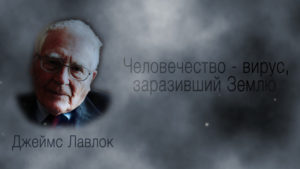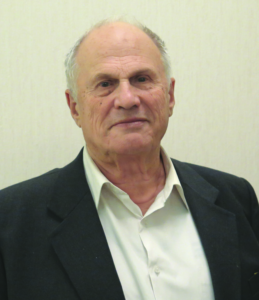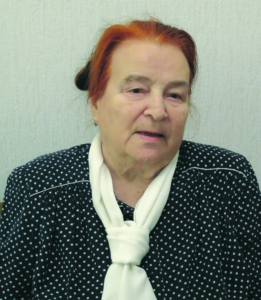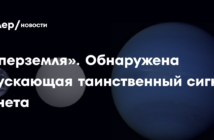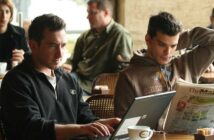Справка редакции: Лавлок, Джеймс Джеймс Эфрэйм Лавлок (англ. James Ephraim Lovelock; род. 26 июля 1919 года, Летчуэрт, Хартфордшир) — британский учёный, независимый исследователь, специалист в различных областях химии, биологии, медицины, экологии.
Autors: Prof., Dr., Romanenko V.N.1 , Prof., Dr., Nikitina G.V.2
1 North-Western Branch of Academy of Information Technologies in Education; Gatchina, Leningrad district. Russia. Chairman of Council. Honored Scientist of Russian Federation, professor, Ph. D.
2 North-Western Branch of Academy of Information Technologies in Education; Gatchina, Leningrad district. Russia. Vice-Chairman of Council. Honored worker of science and education of RAS, professor, Ph.D.
Abstract
The integrity of the Universe is maintained by various interactions. In humankind there emerged a special type of interactions called mediation. Mediation is implemented via activities of special individuals or institutions. The mediation in humankind has dramatically changed lately. It is tied with cardinal changes in its social structure. Some preliminary effects of these changes are discussed.
Keywords: Eusociality, interactions, mediation activity, precariat, social transformations.
1. Introduction: Interaction between entities in Nature and Society
The integrity of the Universe, heterogeneous in its structure, is maintained by continuous interactions between its parts. These interactions are implemented by counter flows of some entities. The complexity of the entities, which implement the interaction, increases as one moves to higher levels in the hierarchy of the Universe. In the simplest cases, the implementation of the interaction is reduced to flows of substance, energy and information [1]. In inorganic matter, the nature of the interaction may be carried out by quarks, atoms, molecules, etc. In the organic, but non-animated Nature, one is facing more complex agents of interactions, such as enzymes, for example. In wildlife, the agents of interactions can be living beings. For example, bees and other insects carry pollen from flower to flower. Certainly, each higher level in the hierarchy of Nature preserves all types of agents of interactions, which are known at the lower levels. So, pollen can be transported not only by insects but by the wind as well. Smells are transferred by special molecules, in particular, by pheromones. Various options for such transfer agents vary greatly. Accordingly, there is a number of terms which represents them. Carrier, transmitter, intermediary are a few of this set. In the process of development of life on Earth, there are a few examples of the emergence of the social communities between beings in any groups. Such properties of several species are types united by a general term of Eusociality [2]. The most well-known of them are so called Social Insects. The other group consists of two mammal species. It is possible to say that the evolution of life on Earth came to this form of cooperation of beings in the species in a few different ways. In human society, the role of mutual relations between its members is fundamental. Besides being in animate and inanimate nature in this case, the agents interact between people, groups and communities adding the special equipment, specially trained people and entire organizations. The exchange of information between people is called Collective Learning [3]. It provides the appearance of the system of human knowledge. This was a result of a long-term evolution of the human brain [4, 5]. Emergence of Human Consciousness was a result of this evolution. In the end, new capabilities of the brain allowed people to monitor simultaneously a large number of actions. As a consequence, a person had an opportunity to create and use tools and weapons. The resulting manifestations of the emergence of Consciousness allows humanity to create new ways to divide its activities. The division of responsibilities in communities of beings is the basis of Eusociality for all known cases. In all pre-human cases, it is based on the differences of the beings in community in sex, ages and other biological foundations. After the emergence of Consciousness, the humans received a new, more effective basis for division of their activities. Here, in addition to genetic and age-related properties of an individual, special training, education, and other personality traits, that have a social basis, began to play a very effective role. Therefore, with people, one prefers to talk about Division of Labor. Division of Labor requires that the members of the community share the results of their activities. When a number of community members is not a large the exchange of products and activities is simple. In a small number of tribe members, a wizard produces hunting tools and in exchange he receives food from hunters. Simultaneously, women prepare food, and old people teach the tribe’s children. When the tribe meets other groups of people there is a need to resolve potential conflicts and exchange goods. In the negotiations, only one or two experienced members of each community take part. Usually they are trusted by leaders or groups of decision makers. Community members who take part in the negotiating process are typically referred to as mediators. Initially, mediation was only temporary and performed errands. However, with the growth of human groups and emergence of proto-state formations the need for mediation continuously increased. In this process, one can detect a continuous increasing of complexity of human activities. In such processes, the variety of requirements for mediation activities increased simultaneously. Also, there is a gradual increase in the training requirements of mediators. As a result, the mediation becomes professional. Already in the ancient world, many professional mediators had assistants. In stages, there emerged large groups and even classes where mediation was a profession. A typical example of mediation, understood in the broad sense, is a commercial activity. In general, merchants, librarians, and diplomats are typical examples of mediation professions. It is possible to say, that each developed society is associated together with the help of mediation. From the point of view of the structure of any state, it is possible to distinguish internal and external mediation. This is not something that is fundamentally new. As it was mentioned in the first lines of this article, all parts of the Universe are bound together by various interactions. The fundamental difference of society is that the mediation activities of individuals and organizations are added to the normal types of the physical, chemical, biological, and other interactions. Moreover, in humankind, mediation became the most important form of interaction. Therefore, this activity has a special name. The main goal of this article is not only to trace the development of mediation throughout history but it is to focus on discussion devoted to some of the latest principal novelties of this type of human activity.
2. The emergence of technical mediation system
The development of the activities of human mediators was always connected with the improvement of auxiliary technical tools. Let us consider the work of the classic library in the mid-20th century as an example. In simple terms, the task of the library is to help a reader to find the desired information and allow him to use it. The librarian is typical mediator. He (she) helps the client (the reader) to find and get the right source of information. Sometimes he (she) helps the reader to communicate with experts on the relevant issue. In any cases the librarian gives recommendations to the reader, regrading what is interesting to read in the area of a reader’s interest. A similar situation can be observed in travel agencies, big supermarkets and many other cases. If desired, the number of examples can be easily expanded. However, our goal is not the description of tasks of the mediating institutions. We want to draw attention to the fact that the complexity of the structure of mediation institutions is accompanied with the development of new technical tools to implement such activities. Development of bibliographic directories, data mining programs, and various schedules are only a few simple examples of such technical tools. Joint improvement and complication of the structure of the institutions and associated with them various technical and technological tools is not a coincidence in any way. All sides of social life are improving interacting with each other. It was probably at first pointed out by Karl Polanyi in his classic book [6]. This book is devoted to the changes in society that are associated with the politics, economics and nature of social relations. It should be noted that since the development in these areas is uneven it is always difficult to establish what the leading factors are in specific changes. Moreover, the complexity of social structures usually forces the researcher to study economics, politics and other relevant circumstances independently from each other. This allows one to create relatively simple models that can be analyzed more or less successfully. However, the effect of such simplification causes the loss of the integrity of the corollaries. People are usually interested in research, which is visible and comprehensible to an average person. Therefore, political and economic studies interest them in the first place. The factors determining these phenomena attracted public attention far less frequently. Therefore, the analysis of a social situation is usually considered from the higher levels of the social hierarchy down. The mediation activities are associated with relatively lower levels of this hierarchy. Therefore, the characteristics of this activity usually draw little attention. In recent decades, it is often noted that the modern society is undergoing major structural changes. This marked a change in the class structure of society [7, 8]. Here it is interesting to note that no matter how various the structure of the classes, castes, and other structural components of society was, beginning from the ancient world, their number has always been around five. It can be assumed that such a restriction is a kind of a General Rule. A change in a class structure of modern society is associated with changes in mediating activities and their technical tools. This article is devoted to an attempt to study the process of the society changes from low levels of the social hierarchy on up. For simplicity, one can track the history of these tools with the moment of the occurrence of hieroglyphs. Records of the information could be forwarded from one place to another in different forms (signs, tables, records about the terms and conditions etc) and they represented the first documents. The appearance of the first libraries and catalogues are examples of the first steps in creation of auxiliary technical tools for mediation. For many centuries mediation used various mechanical devices to maintain necessary information. Over time the creation of special institutions for mediation was required. Markets, stock exchanges, arbitration courts are but just a few examples of such institutions. The emergence of mediating institutions allowed one to compliment the work of the mediator. In the 19th century people understood that mediation work consisted of creative and technical components. At this time, Thomas Edison’s invention and Alexandre Dumas’ preparation of materials for writing historical novels were the first steps in the separation of technical and creative activities. They actually managed to separate the creative process from the technical activities in liaison with buyers, finding the necessary information and legal documentation [9]. For this purpose, they used assistants-mediators. This allowed them to dramatically increase the effectiveness of their work. Currently, a similar approach would be considered conventional. Over time it became clear that the technical aspect of the mediation could be automated. Modern electronics have significantly allowed us to automate technical processes used in the mediation activities. As a result, it turned out that a number of traditional human activities could be replaced by technical means. In the end, many types of employment became unnecessary. At the same time this produced fundamentally new types of activities. These changes were the trigger for the serious transformation of society [6-9]. These questions will be the subject of our further discussion.
3. The impact of changes in mediation on alteration of the social structure of society
A big portion of the technical part of mediation is tied to the searching and processing of various data. Emergence of the Internet, electronic directories, and processing tools allowed people to automate the majority of this work. One may recollect that in the last decade of 20th century there were widespread discussions devoted to the problem: How is it possible to define the Internet? Among different opinions it was an assertion that: The Internet is universal mediator [10]. It is this point of view which allows us to understand the role played by modern methods of mass communication in the transformation of mediation activities. Let us look at how the Universal Communicator (Electronic nets) has cardinally transformed the relationship between man and the means of production. Across the history of humankind this relationship has changed several times. In ancient times a slave was bound by law to the means of production, supplied by his owner. In the middle ages a peasant was working with his tools on the land, which did not always belong to him. The medieval craftsman was the owner of his tools. Representatives of this group were together in special associations called guilds. Merchants were also united in their own guilds. At the beginning, it was a typical self-organization. Subsequently, the guild organizations were supported by law and by custom. This provided certain social guarantees to the members of the respective guilds. After the era of the industrial revolution the means of production were owned by large owners. Workers became hired. Social protections and other safeguards were eventually provided by insurance, law, and other regulatory acts. We are only talking here about the most important social groups. The other layers of the society, for simplicity, were excluded from this discussion. It is well known that changes in relation to production and the disappearance and emergence of new social groups took place with great social upheaval. Starting from these circumstances let us go back to our current time. The modern creative class [7] is tied to its necessary professional activities data with the help of Internet and other electronic devices. A typical employee is associated with data processing programming and even sometimes with the manufacture of complex devices often consisting of small groups, or at times individually. The means of production are owned personally by him (her). It is often not linked to a schedule and regime that is required for working in a large enterprise. Work with computer mediation on the Internet can be carried out from various locations. In such circumstances the employee can simultaneously work on different orders. Therefore, he (she) often works as a free-lancer. A worker adjusts his own work load. This gives him greater freedom, yet often it deprives social guarantees [8]. The authors draw attention to the fact that in relation to the means of production, the situation reminds one of what the medieval artisan had. Currently, there are many other occupations which are related to individual work, independent from any performers. The number of these occupations is progressing. Namely, this includes professions related to work in networking, programming, etc. Such activities require high qualifications. Along with them there are many professions, which, on the contrary, require little skilled labor. Work cleaners and pizza guys are a few of them. Despite this opposite situation, these occupations have a lot in common in relation to the means of labor. It allows us to combine them into a single social group called The Precariat [8]. The situation has significantly changed almost every part of this social group in recent years in terms of brokering. So, for example, almost all members of this group are looking for temporary clients and employers via the Internet. Networks and specialized portals are emerging for exchange of experience and presentations of such workers. At the same time, it is clear that some types of activities have prospects for further development, while others are in dying professions. The above clearly indicates the relationship of changes in mediation and transformational changes in social structure. These transformational changes have generated the emergence of new social groups with their own types of mediation, which were unknown earlier. Some examples of such activities are training work to operate new complex equipment, operation of various call centers, delivery services and so on. It is difficult to enumerate all of them because nowadays different new occupations and mediation related to them come up at a fast pace.
Сonclusions:
This analysis is one of the first attempts to associate mediation work with the development of the social structure of society. We believe that these results speak in favor of a deep study of the role of mediation in the process of the historical development of humankind. This will allow us to analyze the social situation in the modern world, and can also serve as the basis for attempts to predict the near future.
References
1. Romanenko, V., Nikitina, G. (2014) How the Physical World Impacts Different Objects Studies in Sociology of Science 5(3): 40-43.
2. Kaeller, L., Chapuisat, M. (2017) Eusociality and Cooperation. Retrieved on April 23, 2017 from: http://onlinelibrary.wiley.com/doi/10.1002/9780470015902.a0003670.pub3/full
3. Christian; D (2005) Maps of Time: An Introduction to Big History Berkley CA: University of California Press.
4. Donald; M. (1993) Origins of the Modern Mind: Three Stages in the Evolution and Cognition. Cambridge MA: Harward Univ. Press.
5. Donald, M. (1993) Préces of the modern Mind: Three stages in the evolution of culture and cognition Behavioral and Brain Sciences 16: 737-791.
6. Polanyui, K. (2001) The Great Transformation. The Political and Economic Origins of Our Time 2-nd edition Djston: Beacon press. 317 pp.
7. Florida, R. (2004) The rise of the creative class: and how it’s transforming work, leisure, community and everyday life NY: Basic books. 434 pp.
8. Standing, B. It allows to combine them into a single social group. The New Dangerous Class (2011) London: Bloomsbury Academic. 198 pp.
9. Romanenko, V.N. & Nikitina;,G.V. (2015) Predtechi (The Baptists) (In Russian) Collection of Essays. Saint-Petersburg: Norma.
10. Romanenko, V.N., Nikitina, G.V. (2005) Setevoy Informatsionnyi Poisk (Information searching in the nets) (In Russian) Saint-Petersburg: “Professia”. 288 pp. .
54overview of transition
Authors:
- Vladimir Romanenko: Academician, Honored Scientist of the Russian Federation Born: January 14, 1931 Graduated as Master in Theoretical Physics: State Saint-Petersburg University. 1953. PhD in area of Physics -1962, as Doctor in Technique — 1966 1953- 1966 Researcher in Russian State Academy of Science; 1967- 2001 Head of Department of Physics (Higher Marine School, University of Architecture and Civil Engineering. 2001 – Head of Scientific Council- North-Western branch of Academy of Information Technologies in Education. putyatino1941@gmail.com.
2. Galina Nikitina: Academician, Honored Worker of Science and Education of Russian Academy of Natural Science. Born: March 13, 1932. Graduated as Master in Physics and Electronics in 1955, Saint-Petersburg Electrotechnical University. Ph. D in Technique – 1963; Doctor Science in Pedagogics 1992. 1955 – 1967 Researcher in Russian State Academy of Science; 1969-1998 Associated Professor, Head of Department – State Technological Institute, Higher Marine School. 1999- currently General Scientific Secretary, Vice-Chairman – North-Western Branch Academy of Information Technologies in Education. ladogalake@gmail.com
Corresponding author: Prof. Vladimir Romanenko. E-mail: putyatino1941@gmail.com , Phone: +7(812)783-4511 (private), +7(921)924-6330 (cell). 8 Krasnoputilovskaya str., apt 4, Saint-Petersburg, 198152. Russia.
Иллюстрация: MyShared.ru








